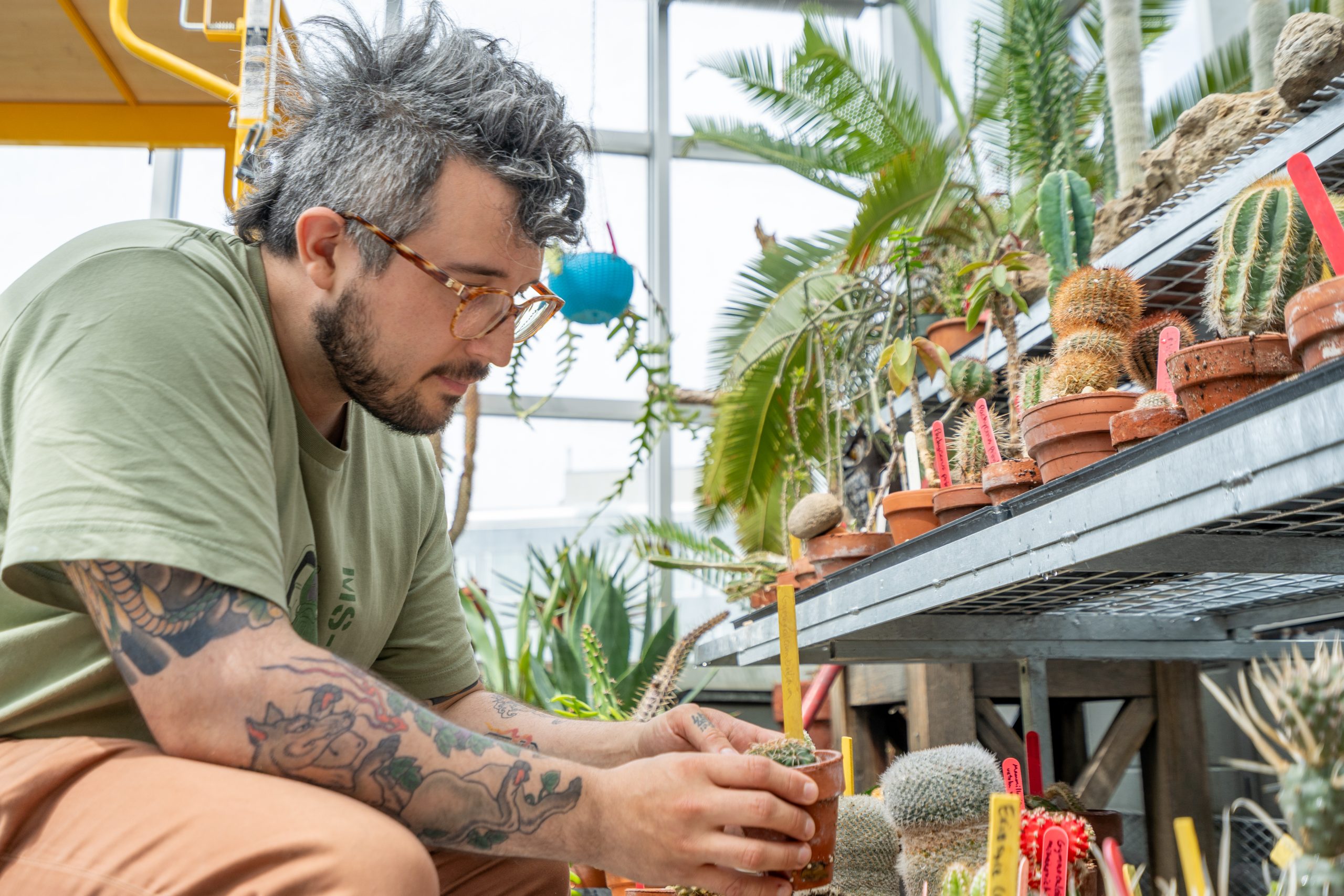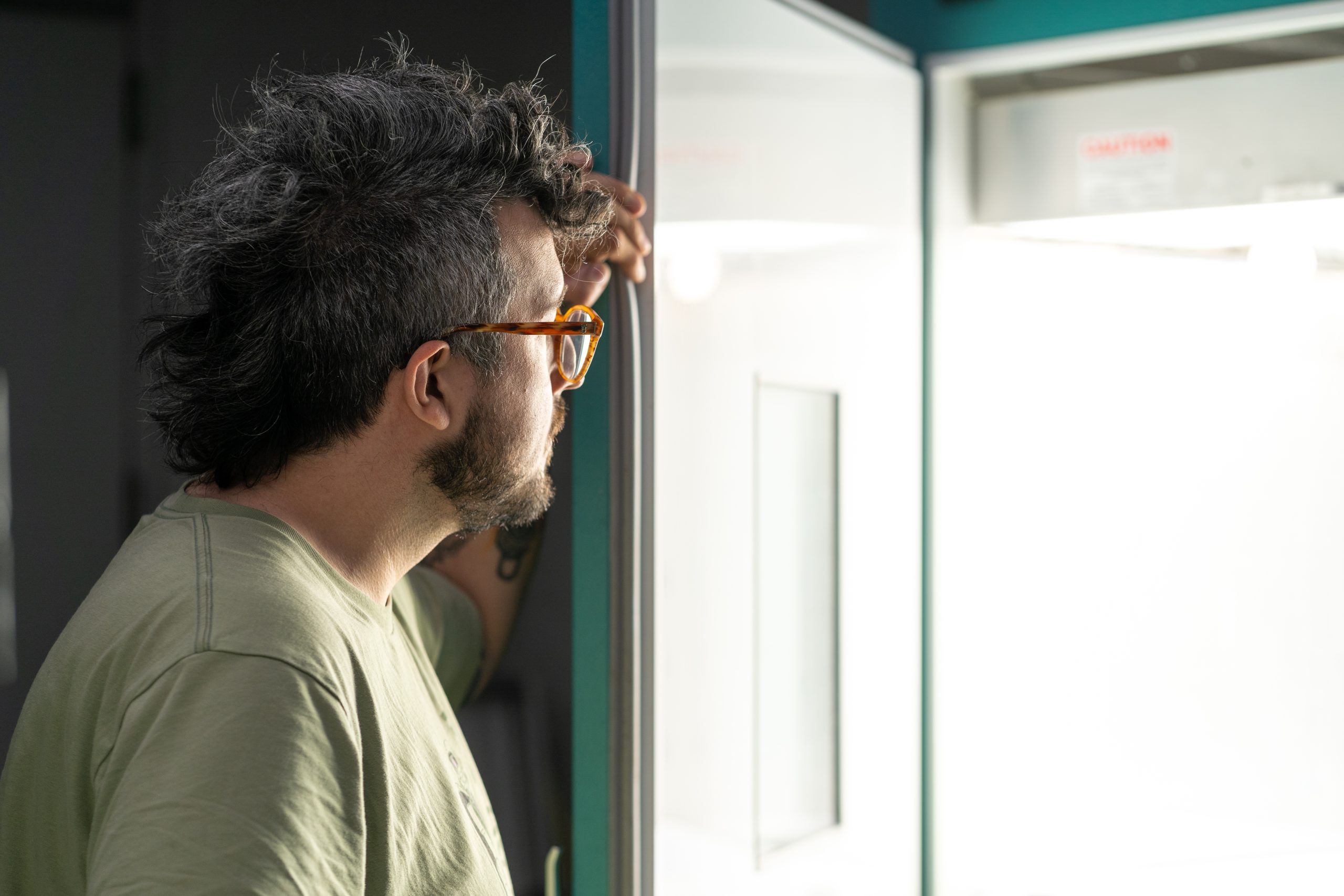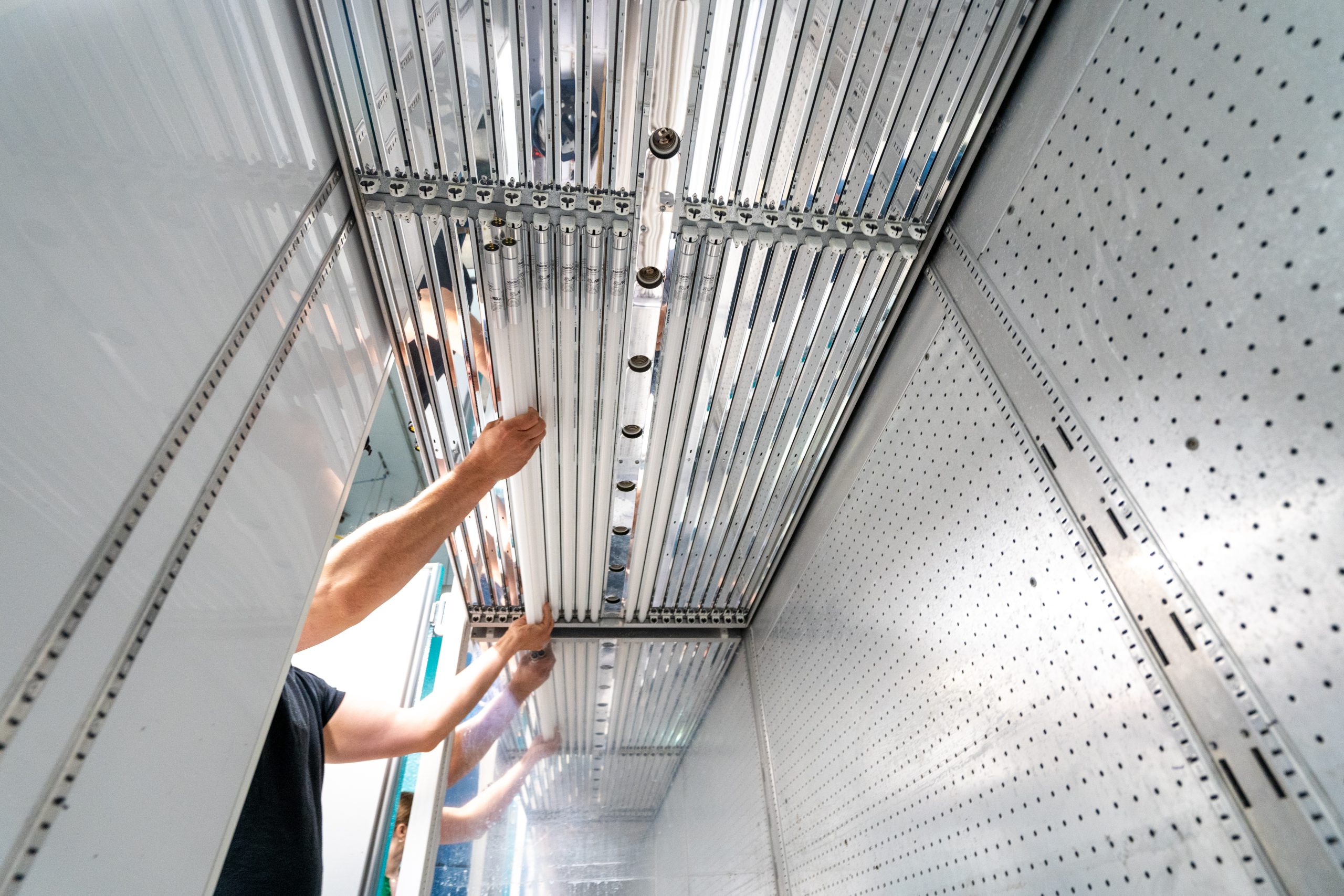Let there be (better) light! Upgrades in U of T’s plant facilities boost research and sustainability
Energy-saving LED lights are transforming research capacity in U of T’s growth facilities, unlocking new types of research while reducing energy consumption

From rooftop greenhouses to subterranean growth chambers, the University of Toronto’s plant research facilities are quietly powering world-class research. Home to more than 500 unique plant species and 80 tightly controlled environmental chambers, these spaces support researchers investigating everything from evolutionary biology to plant resilience and insect migration.
As part of Project Leap, the University of Toronto’s ambitious plan to reduce greenhouse gas (GHG) emissions by over 50 per cent by the end of 2027, these growth facilities are undergoing a major lighting retrofit — upgrading from fluorescent and incandescent lighting to energy-efficient LEDs.
The retrofit is part of a larger effort to replace lighting in 38 buildings across the St. George campus, saving enough electricity to power more than 520 homes each year.
As well as helping U of T meet its climate goals, these upgrades are unlocking new research possibilities.
“Our growth chambers are finely controlled spaces where researchers can simulate different environmental conditions – from deserts to tropical rainforests,” says Chief Horticulturist Tom Gludovacz. “The lighting needs to be precise, consistent and tailored to the needs of the plants. Without this, you lose the reproducibility of experiments. Until now, this has been a real gap in our capabilities.”
In the past, researchers have relied on a mix of fluorescent and incandescent lighting to simulate the full spectrum of natural light. But these older systems are inconsistent, hard to source, energy intensive and contain toxic mercury — making them increasingly unsustainable.
With support from U of T Facilities & Services, Gludovacz and his team were able to identify LED solutions that offer the right intensity and spectral quality for research-grade plant growth. The result is a complete retrofit of outdated lighting systems, replacing them with LEDs that use up to 80 per cent less energy and last up to eight times longer. The outcome: lower electricity demands, fewer repairs and less waste.
“These aren’t your typical hallway or office LEDs,” says Gludovacz. “They’re designed for photosynthetically active radiation, the specific spectrum of light plants need.”

The lighting upgrade is already making a difference. Researchers across the departments of Cell & Systems Biology and Ecology & Evolutionary Biology in the Faculty of Arts & Science, as well as colleagues from a wide variety of associated disciplines, now have access to brighter, more consistent lighting — key for reproducible results and for exploring new kinds of research.
“One research group, led by Professor Rowan Sage, is studying the evolution of photosynthesis using desert plants from South Africa, which thrive under intense light. That kind of experiment was much more challenging before,” says Gludovacz. “We’re planning high-light trials starting in July.”
Another group, led by Assistant Professor Micah Freedman, is growing milkweed and analyzing its chemical signatures to track the migration of monarch butterflies across North and Central America.
This work relies on precise growing conditions, and the new lighting makes that possible.

“We are grateful for the support of Project Leap in replacing the lights in our growth facilities,” says Professor Nicholas Provart, chair of the Department of Cell & Systems Biology. “Not only will this help keep U of T at the top of the sustainability rankings, but it provides concrete benefits to our researchers with better light quality and reduced heat load for the plants we require for our research.”
For Gludovacz and his colleagues, the lighting retrofit represents more than an equipment upgrade, it’s a meaningful step in aligning campus infrastructure with the values of the research it supports.
“We’ve got faculty and students working every day on climate change, biodiversity loss, and sustainable ecosystems,” he says. “It’s rewarding to see the university making systemic changes that support that vision.”
The growth chambers lighting retrofit will save an estimated 500,000 kilowatt-hours of electricity per year — the equivalent GHGs of removing nearly 75 cars from the road. Plus, because the new LEDs produce less heat, the chambers require less cooling, reducing the energy footprint even further.
“By switching to energy-efficient LEDs across campus, we are reducing lighting-related energy use by 40 per cent,” says Ron Saporta, chief operating officer, property services & sustainability. “Alongside work to connect our campus to the geoexchange under Front Campus, recover waste heat and switch from natural gas to electric heating systems, we are on track to become a climate positive campus by 2050.”
To learn more about Project Leap and the university’s journey to climate positive, visit the Project Leap webpages.
